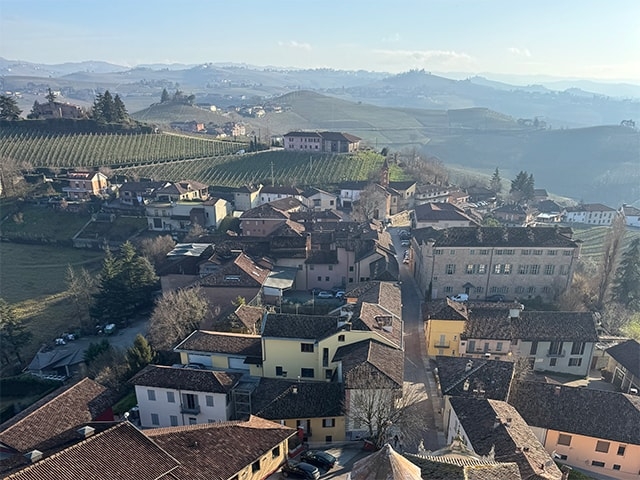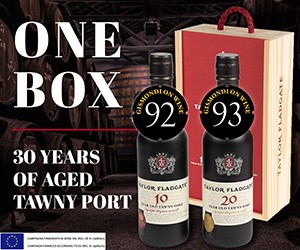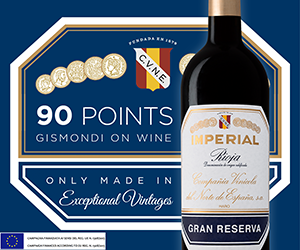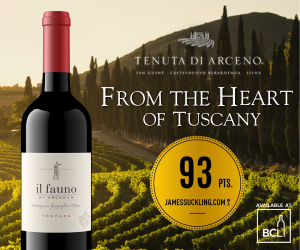I went to Piemonte to better understand its iconic red wines, but left even more intrigued by its whites.
I wanted to get a firmer grasp of the crus of Barolo and Barbaresco, the zenith for Nebbiolo. We toured around both areas, hopping in and out of the van, until it felt like there wasn’t a winding road that we had missed. We could see – and feel – the different microclimates. The mist shrouded some crus in the early morning, until it slowly started to dissipate. The warmth of the sun in the afternoon depends on the exposure and aspect of the steep hillsides. Not to mention the proximity to the Alps, towering in the distance. And the varying soils, explained by the topography of the valleys and hillsides, as if you could see millions of years of geology play out in real time.
I also wanted to gain a deeper understanding of the regional expressions of Barbera and Dolcetto. And I – well, I tried. It’d be tempting to label both of these grapes as secondary to Nebbiolo. The stereotype is that these are the wines you drink throughout the week, while your Barolos and Barbarescos are tucked away in your cellar. They do, for the most part, represent exceptional value, especially from communes like Barbara d’Alba and Diano d’Alba (Dolcetto). However, the quality and style seem more intrinsically linked to the producer than to the region. A good Barolo or Barbaresco producer is just as likely to have a (very) good Barbera or Dolcetto.
Lastly, I wanted to wrap my head around Piemonte’s white wines. If I’m being honest, I’ve often felt underwhelmed by what I’ve tasted. But that felt more like a personal shortcoming than any slight against the region as a whole. I needed to taste more widely. And that’s when things got interesting – and complicated. There’s a reason that white plantings are increasing.
The first thing to keep in mind is that for a region with well-established signature grapes – both red and white – there’s no shortage of diversity. Ignoring Moscato, Arneis and Cortese are the most widely planted white grapes, and the most highly regarded. Arneis reaches its pinnacle in Roero Arneis DOCG, which conveniently includes the variety in the commune name. The wines are often crisp and straightforward, led by aromas of lemon and pear drops. The best examples, from producers like Vietti (91 points for the 2022 vintage) and Malvirà (90 points for the single vineyard 2023 S.S. Trinità), are concentrated and textured, with more depth from honeyed, gold-hued fruit and a beeswax character.
Of course, it’s not always that easy – this is Italy, after all. The best expressions of Cortese come from Gavi DOCG, with no varietal labelling. But the quality was impressively high across the limited number of producers I tried. The wines were expressive and gently floral, offering some combination of white peach, apricot, and lemon, backed by precision and a marked salinity. Depending on the producer, you could mistake the wines for Chenin Blanc or Viognier. I left wanting to explore more, especially from small producers based in the region, like Roberto Mazzarello and Molinetto.
The next most significant variety is Chardonnay. For a region with a swath of indigenous grapes, there’s a surprisingly strong presence of international varieties – not just Chardonnay, but also Riesling and Sauvignon Blanc. The best wines – typically from renowned producers that benefit from the cachet of their Barolo or Barbaresco – are excellent. But it’s also challenging to understand how these whites fit into the broader world of wine. They’re impressive wines, but often they feel somewhat forced; more wines of circumstance than place, with the price tag to match. Sauvignon Blanc, interestingly, can be the exception. Poderi la Collina’s 2023 Langhe Sauvignon is excellent value and surprisingly Bordeaux-like (90 points), while Adriano’s 2016 Basarico Langhe Sauvignon (90 points) demonstrates that it can be unexpectedly age-worthy too. (The 2022 vintage is currently at Marquis.)
The future, however, feels more promising in other emerging indigenous varieties. Timorasso has already arrived. Some have referred to it as “the new Burgundy of Piemonte.” And it does feel more Burgundian than Piemonte’s Chardonnays – with similarly high-end pricing, too. The wines are Chablis-like: lemony, saline, and mineral, with a lees-influenced texture. I spoke with multiple Master of Wine students who were sure it’d be on this year’s exam. (It was not.) One of the top producers is Vigneti Repetto, now available in British Columbia through Minimalism, as well as in Ontario. Look for the 2023 Piccolo Derthona (90 points) or 2022 Derthona (91 points).
An even brighter star may be Erbaluce. Primarily from northern Piemonte, the best examples come from Caluso, where they’re conveniently labelled as Erbaluce di Caluso DOCG. Plantings are relatively modest at approximately 375 hectares, but are increasing for good reason. When cropped low, the wines exhibit remarkable freshness and concentration, with a pronounced saltiness complemented by notes of lemon peel, white blossom, and almond. The high acidity makes them well-suited to both sparkling and sweet wines, like the Tenuta Roletto 2016 Sessanta (90 points) or Tenuta Roletto 2013 Passito (90 points), though I was most impressed by the dry white wines. The standout was Tappero Merlo’s Kin (91 points for the 2020 vintage and 93 points for the 2019 vintage), which is made in a more oxidative style, aging 18 months in French oak before an additional two years in bottle. The wines are bright and mouth-watering, with significant dry extract. It’s not surprising they age so well.
Rediscovered 30 years ago, Nascetta was traditionally cultivated as a table grape. Today, there are over 20 different producers. It’s a semi-aromatic variety, zesty and citrusy with good concentration, that falls somewhere between Riesling and Pinot Gris. It’s not the easiest to handle in the winery, with a tendency to be reductive, and what I tasted was a mixed bag. With prices not often correlating to what’s in the bottle, approach Nascetta as a discovery, and you’re less likely to be disappointed.
Visiting Piemonte made it even more complicated. But as it became more complex, it became more interesting. Hopefully, this provides a starting point for your journey. I know I’m just starting myself.

 quicksearch
quicksearch






